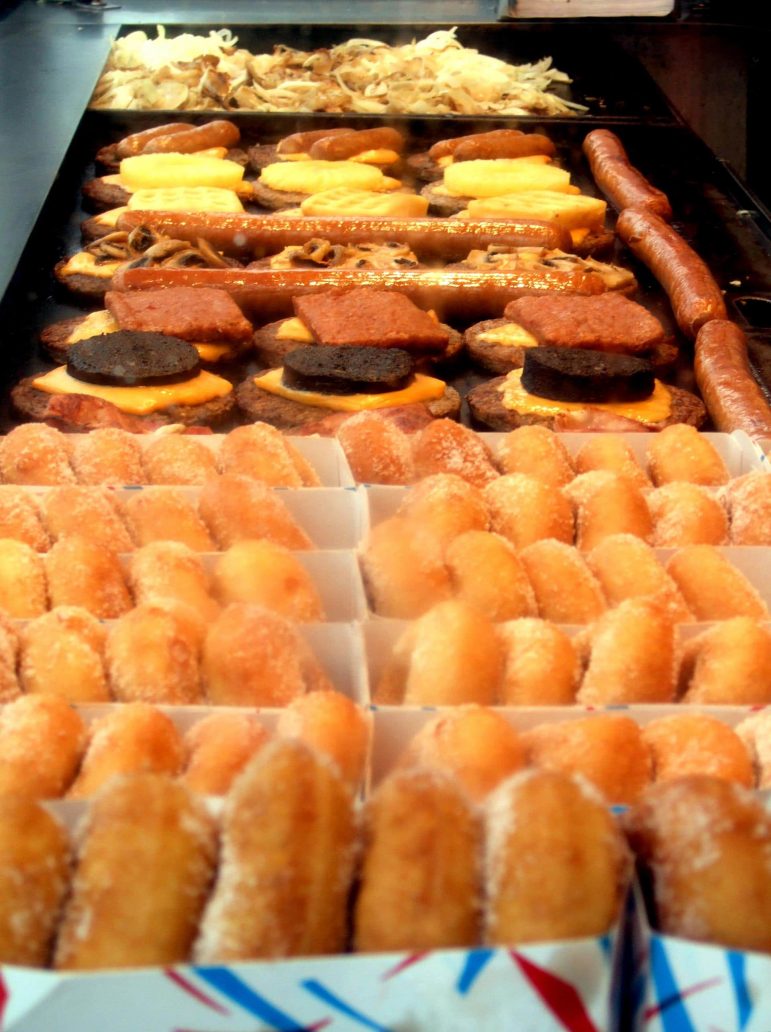“I feel like I have less than zero time outside of the essential life survival!”
For Birmingham attorney Suzanne Ashe 10 and 12 hour work days are common, and at home she’s constantly chasing after her two preschoolers.
“I eat at my desk, breakfast and lunch a lot of times because I don’t have time to do breakfast at home while I’m getting the kids out the door.”
So Ashe is always looking for ways to save time when it comes to food. On this day she’s trying one of the hottest new products out of Canada: the 5-Minute Chef Meal. It hit shelves in the United States in March, so Ashe is one of the first here to try it.
Bypassing the oven – even the microwave – this meal warms itself up, in its own box, anywhere, using technology the U-S government developed to feed soldiers during the Gulf War. But is it any good? Between bites, Ashe has this assessment.
“It’s really not bad. The noodles taste overcooked. Overall, it’s a little bland. I didn’t expect it be really great tasting so it’s not a big disappointment. I mean it’s definitely edible.”
Not exactly a glowing recommendation, but that probably won’t faze the manufacturer and others like it who are rushing new convenience foods to market. They’re responding to changing family demographics, says Keecha Harris, a registered dietitian and W. K. Kellogg Foundation Food and Society fellow.
“We have a very small proportion of families that actually convene on a regular basis to eat meals. So mom may be eating in the kitchen and dad may be eating at the television and about 50 percent of their teenagers are going to be eating at their computer.”
And then there’s the car. Twenty percent of all meals today are consumed in the car, leading to the rise of so-called “handheld foods” that don’t drip, spill or stick. One example that raised eyebrows when it was test-marketed in the northeastern U.S. is Breakaway Foods’ line of IncrEdible brands, including scrambled eggs and Mac& Cheese in push-up tubes.
“It was in a package that was shaped like an old push-up ice cream bar.”
Williams Roberts is business editor of Prepared Foods Magazine.
“You’d put it in the microwave for however long, I think it was 90 seconds, you pulled it out and you had a little stick that you put in the one end and you pushed it out the other end.”
But the push-up tube was a flop with consumers. It was too messy and they couldn’t pepper their eggs. Roberts says failures are common.
“I would guestimate, on the conservative side, 50% will fail and will be off the shelves within a year.”
Although overall food sales are flat, convenience foods are selling at a pretty fast clip led by products like Go-Gurt and Campbell’s Soup-at-Hand. Production of handheld foods is growing at an annual rate of eight percent and sales could reach $2.5 billion a year by 2004, thanks in part to colorful packaging and catchy television advertising, says University of Alabama-Birmingham nutrition professor Beth Kitchin.
“It’s all marketing! No matter how intelligent a consumer is I think a lot of us really fall for that sort of stuff because we want that edge. But so many of these things are so expensive and they’re not going to be of any additional benefit, but people go for it!”
Meanwhile, manufacturers are cooking up new convenience foods that they hope consumers will go for in the coming months. The menu includes hot Ore-Ida French fries from vending machines and for those health-conscious parents — the “I Love Veggies Turkey Kit”, which offers kids meatless veggie turkey slices, crackers and cheese.

